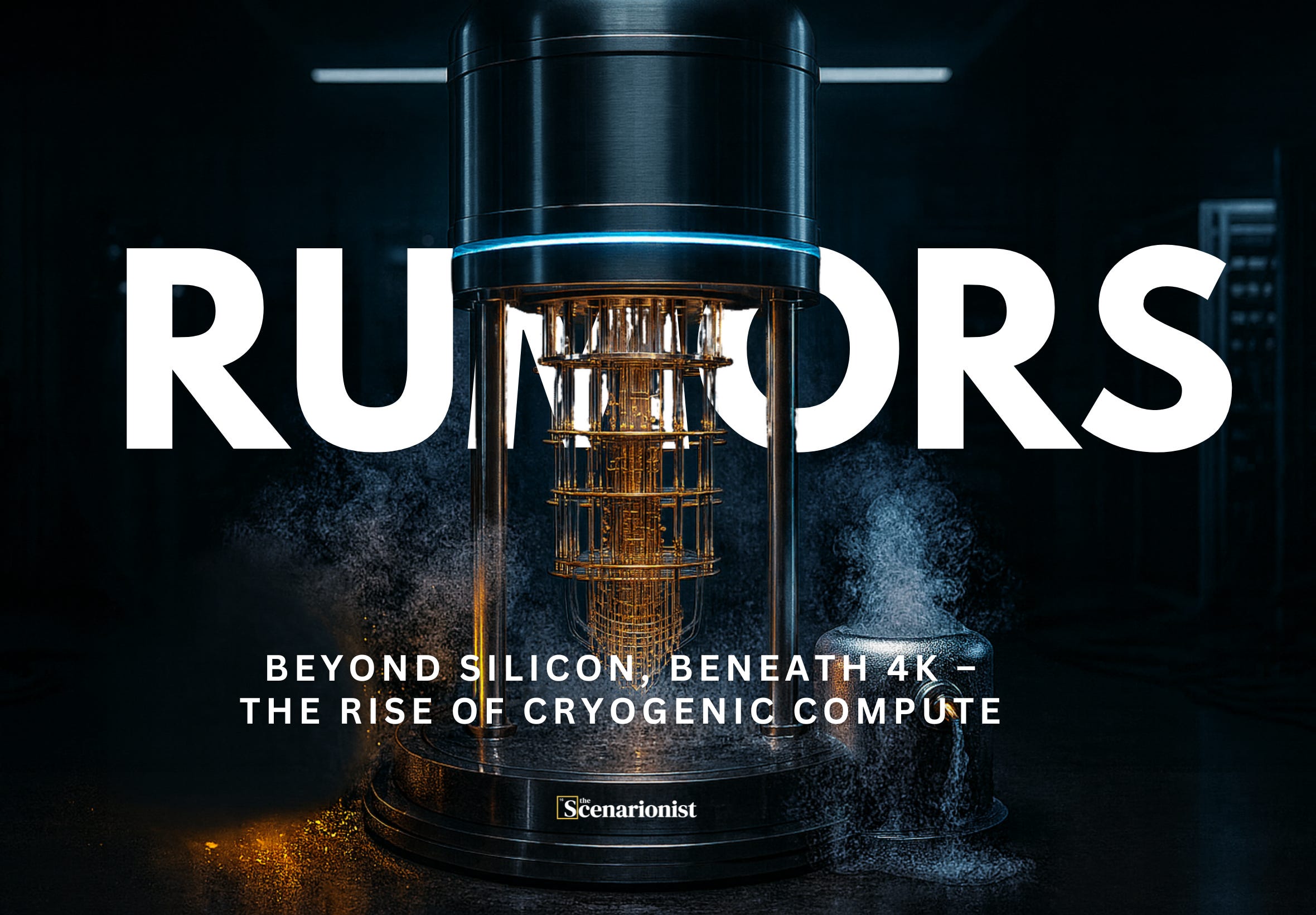Beyond Silicon, Beneath 4K – The Rise of Cryogenic Compute | Rumors
Five Startups, One Rumor. Startups are harnessing cryogenic electronics and thermodynamics to break scaling limits in AI and quantum — from cold chips to million-qubit systems.
Welcome to Rumors!
✨ Rumors is a pattern-recognition layer for investors, founders, and operators who care about where the frontier is heading — before it becomes consensus, before the rest of the market connects the dots.
Discover. Compare. Assess. Stay ahead.
✨ Inside This Rumor: Cold AI
Introduction
Superconductors shift compute from transistor economics to materials leverage.Macro Frame: Why Now?
Power budgets, foundry ceilings, and sovereign compute mandates are converging.Framing the Problems
Power budgets are exploding, precision scaling has stalled, and data centers are choking on inference costs. The bottleneck isn’t AI models—it’s physics.Market Metrics That Matter
1000× energy efficiency gains. 10–100 GHz logic speeds. Single-digit femtojoule operations.Player Mapping: Five Startups Shaping the Rumor
Early-stage efforts are converging on core cryo challenges—logic, memory, packaging, and fabrication. Here are five companies tackling distinct stages of cryo-AI acceleration: logic design, EDA tools, memory, and systems integration.The Competitive Edge
Zero static power. 100 GHz logic. Cold AI flips the energy-performance curve—and the capex model.Follow the Money
DARPA dollars, hyperscaler interest, and quiet university spinouts all point to a looming cold compute land grab.Strategic Lens
Cold compute isn’t just a chip story—it’s a new stack, a new datacenter model, and a new control point.Risk Assessment Framework
Fab constraints, EDA immaturity, cryo logistics, and a limited developer ecosystem.5–10 Years Out: Strategic Horizon
If superconducting logic scales, the world’s most powerful inference engines will run at 4 K.
1. Introduction
In a compute landscape where Moore’s Law has flatlined and energy ceilings are becoming the new cap tables, the next architectural shift isn’t hotter — it’s colder.
The future of high-performance computing may lie at extremely low temperatures, where superconductors and quantum-informed architectures can unlock levels of speed and efficiency far beyond what traditional silicon can deliver.
Over the past 18 months, startups across the U.S., Europe, and Israel have revealed prototype superconducting processors, cryo‑CMOS control chips, and quantum architectures that challenge the dominance of room-temperature computing. Their shared goal is to address the two defining bottlenecks of today’s compute landscape — surging power consumption and limited quantum scalability — by rethinking hardware from the ground up.
At temperatures near 4 Kelvin (–269 °C), superconducting materials eliminate electrical resistance, enabling logic and interconnects that consume only a fraction of the energy required by standard silicon. In this regime, physical phenomena like Josephson junctions are no longer scientific curiosities — they become practical building blocks for systems offering 100× greater energy efficiency, ultrafast switching, and zero static power draw.
The sections that follow explore why this shift is happening now, what challenges still stand in the way, and how a new generation of companies is shaping this emerging paradigm.
This analysis focuses on five ventures, each addressing a critical constraint within the cryogenic stack — from thermodynamic AI accelerators to superconducting logic, from RF signal acquisition to full quantum–classical system integration.
What connects them is not hype, but a shared premise: power limits are compute limits. And when GPU racks are projected to draw 600 kW, shifting the performance curve downward in temperature is no longer a theoretical option — it’s becoming an architectural necessity.
We are witnessing the early formation of a new compute stack, and its implications are already material:
Over 1,400 dilution refrigerators are now installed globally
Superconducting accelerators are demonstrating 100 GHz logic paths
Cryo-CMOS transistors have achieved 0.1% of the power draw of their room-temperature counterparts
Governments in the U.S., EU, and Israel are deploying hundreds of millions in non-dilutive capital into the ecosystem — not as research, but as infrastructure
The teams driving this shift believe that the future of hardware lies not in pushing CMOS further, but in rethinking its physical assumptions entirely. Superconductivity — with its zero-resistance pathways, minimal switching energy, and native compatibility with cold environments — offers a new foundation for logic, memory, and interconnect. Cooling, in this context, becomes a design advantage — not an operational burden.
The ambition is to write a new playbook for computing: one where transistors are augmented or replaced by quantum-compatible devices, and where 4 K becomes a viable operational layer for AI, HPC, and hybrid systems.
✨ This Analysis is Reserved for Our Premium Members
To read it, unlock The Scenarionist Premium today.
Becoming a Premium Member of The Scenarionist means you also get full access to our complete archive of Deep Tech intelligence, actionable Playbooks, rigorous VC Guides, and founder-ready strategies you won’t find anywhere else — all based on our independent research, original deep dives, and exclusive insights with the world’s top Deep Tech experts.
If you’re serious about Deep Tech and want a real edge in practical knowledge and strategic thinking, The Scenarionist Premium is the one resource you can’t afford to miss.
👉 Join The Scenarionist Premium today — and level up your Deep Tech advantage!
2. Macro Frame: Why Now?
The concept of cryogenic computing and superconducting chips is not new, but a confluence of four forces is turning it from a scientific curiosity into a commercial imperative.


